Understanding the Cultural Philosophies That Shape Each Approach
To truly grasp the differences in the Japanese vs Korean skincare debate, you have to look past the product textures and number of routine steps. The unique approaches of J-Beauty and K-Beauty are tied to distinct cultural philosophies that influence everything from product formulation to the final look you're trying to achieve. Understanding these core values is the first step in deciding which approach fits your personal skin goals and daily life.
J-Beauty: The Pursuit of Mochi-Hada Through Wabi-Sabi
Japanese skincare is a direct reflection of traditional Japanese aesthetics, especially the concepts of wabi-sabi—finding beauty in imperfection—and kansō (簡素), which celebrates simplicity. This cultural background informs a skincare philosophy that prioritizes prevention, minimalism, and long-term skin health. The objective isn't a quick, dramatic change but the patient cultivation of mochi-hada, or "rice-cake skin."
This ideal describes skin that is:
- Plump and Bouncy: This texture is achieved through deep and consistent hydration.
- Soft and Supple: Maintained with gentle, nourishing ingredients that respect the skin's barrier.
- Even-toned and Clear: Focused on preventing issues like hyperpigmentation and irritation before they start.
This philosophy promotes a partnership with your skin. Instead of aggressively fighting flaws, the Japanese approach aims to build a resilient, balanced environment where the skin can flourish on its own. Routines are often simple, featuring a few high-quality, multifunctional products. The focus is on time-tested, gentle ingredients like rice bran, camellia oil, and advanced forms of hyaluronic acid. This methodical practice is less about instant fixes and more about a lifelong commitment to skin wellness.
K-Beauty: Glass Skin Through Ppalli-Ppalli Innovation
On the other hand, Korean skincare is powered by the nation's ppalli-ppalli (빨리빨리) culture, which means "hurry, hurry." This fast-paced mindset fuels a constant drive for innovation, immediate results, and visible perfection. The ultimate aesthetic goal here is yuri pibu (유리피부), or "glass skin," an ideal defined by an intensely dewy, poreless, and radiant complexion that looks almost translucent.
The famous multi-step Korean routine is designed specifically to achieve this flawless, light-reflecting finish. Each step layers hydration and targeted treatments, working together to produce a dramatic, glowing effect. The culture of rapid innovation means K-beauty brands are always experimenting with new ingredients (like snail mucin and fermented extracts) and advanced technologies to deliver noticeable results quickly. This approach is perfect for consumers who enjoy discovering new products, follow trends, and want to see clear, often immediate, improvements in their skin.
While both traditions value healthy skin, their methods and end goals are quite different. You can dive deeper into these distinctions in our analysis of Japanese vs. Korean skincare contrasts. Ultimately, Korean skincare is a proactive, results-oriented system designed for transformation.
Market Dynamics That Reveal the Real Story Behind Each Tradition
To get the full picture in the Japanese vs. Korean skincare debate, we need to look past the product labels and routine steps. The economic engines driving each industry are vastly different, influencing everything from product development and pricing to how these beauty traditions reach a global audience. These market structures are a direct result of their core cultural values.
Japan: The Heritage-Driven Premium Market
Japan's beauty industry is a well-established, mature giant. It operates on a foundation of heritage and reliability, where legacy brands like Shiseido have spent decades, and in some cases over a century, building unshakable consumer trust. This approach favors methodical, research-heavy development over chasing fleeting trends.
Japanese companies invest significantly in perfecting existing formulas and technologies. The goal is to create premium products built for long-term results and brand loyalty. The market is primarily domestic, serving a local consumer base that values proven quality over constant newness and is willing to pay a higher price for it. This explains why many iconic Japanese products remain best-sellers for years with only minor tweaks; the business model is centered on creating timeless, high-performance staples, not disposable trends.
Korea: The Agile, Export-Focused Innovator
In sharp contrast, the Korean beauty market is defined by its speed and aggressive export strategy. K-Beauty often follows a "fast-fashion" model for skincare: rapid innovation, viral marketing campaigns, and a relentless cycle of new product launches. This fast pace is fueled by intense competition at home and a strong focus on capturing the global market.
Korean brands are incentivized to create visually appealing, "Instagrammable" products with novel ingredients that can quickly become international hits, often at a more accessible price. This strategy is about generating excitement and capturing trends as they emerge.
The economic data clearly shows this strategic split. The Japanese beauty market is a massive entity, valued at USD 32.02 billion in 2024, and is projected to grow at a steady pace. Meanwhile, the global K-beauty market is valued at a smaller but quickly growing USD 11.56 billion in 2024. This difference underscores Japan's focus on its large, stable domestic market versus Korea's nimble, trend-led global expansion. You can explore a deeper comparison of these key distinctions in Japanese and Korean skincare. You can also read more about the global K-beauty market growth to understand how this export-first approach is succeeding.
Ultimately, Japan’s market offers consumers proven, high-quality formulations backed by extensive research. Korea’s market provides exciting innovation and accessibility, giving consumers a wider, more trend-forward selection.
Routine Architecture: How Each System Actually Works in Practice
The debate between Japanese vs. Korean skincare is often simplified to a numbers game: Japan’s four steps versus Korea’s ten. This view, however, misses the strategic thinking behind each routine's structure. The number of steps isn't random; it reflects a distinct philosophy for achieving specific skin goals, from the preventative, resilient approach of J-Beauty to the targeted, layered method of K-Beauty.
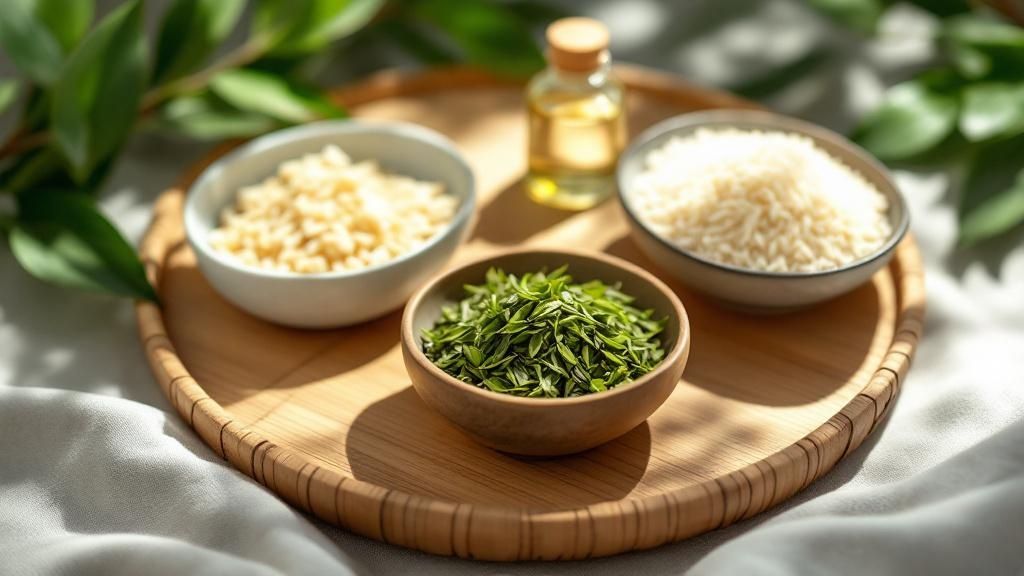
The Japanese Philosophy: Quality Over Quantity
The Japanese routine is built on the core principle of minimalism and efficiency. This isn't about using fewer products for simplicity's sake, but about choosing potent, multi-functional formulas. The objective is to deliver substantial benefits without overwhelming the skin, focusing on strengthening its natural barrier for long-term health rather than chasing immediate, dramatic results.
Each of the four fundamental steps has a clear and essential purpose:
- Double Cleanse: The routine begins with an oil-based cleanser to break down makeup and sebum, followed by a gentle foaming cleanser to wash away any remaining water-based impurities. This two-part method ensures a thoroughly clean base without stripping the skin of its necessary moisture.
- Hydrating Lotion (Keshosui): This is the heart of the Japanese routine. Unlike a Western toner, a Japanese lotion is a watery, powerful hydrator loaded with ingredients like hyaluronic acid. Its main job is to drench the skin in moisture, preparing it to better absorb what comes next.
- Moisturizer/Emulsion: The final step is to seal in the hydration from the lotion and provide nourishment. Whether you choose a lighter emulsion or a richer cream depends on your skin type and the season. The synergy between the lotion and moisturizer is crucial—one delivers the water, and the other locks it in place.
This focused structure is perfect for individuals with sensitive skin, those who value a time-efficient ritual, or anyone prioritizing the prevention of future damage over correcting existing concerns.
The Korean Philosophy: Synergistic Layering
The famous multi-step Korean routine is a masterclass in strategic layering. The idea is that different active ingredients, applied in a specific order, create a combined effect that a single product can’t match. This approach allows for a deeply personalized regimen that can target multiple issues—from acne and hyperpigmentation to fine lines—all at once.
Success with this method hinges on understanding product texture and function. The golden rule is to apply products from the thinnest to the thickest consistency. This ensures each layer is properly absorbed, preventing heavier formulas from blocking lighter ones. Essences, serums, and ampoules are stacked to deliver concentrated doses of actives, with each layer building on the last to create that sought-after "glass skin" look. To learn more about how these routines compare, you can explore this detailed guide on the 10 steps in Japanese vs. Korean skincare.
To better understand how these philosophies play out in practice, this table breaks down their strategic differences.
| Routine Element | Japanese Philosophy | Korean Philosophy | Time Investment | Best Suited For |
|---|---|---|---|---|
| Cleansing | Double cleanse to purify without stripping the skin's natural barrier. | Double cleanse, often with weekly exfoliation, for a flawless canvas. | 5-7 minutes | 5-10 minutes |
| Hydration | Deep, focused hydration with a single, potent lotion (Keshosui). | Multi-layered hydration using essences, serums, and ampoules. | 2-3 minutes | 5-15 minutes |
| Treatment | Often integrated into the moisturizer or an optional single serum. | Highly specific, with multiple serums/ampoules for targeted issues (e.g., Vitamin C, Niacinamide). | 1-2 minutes | 5-10 minutes |
| Moisturizing | A single product (emulsion or cream) to seal everything in. | Often involves a lotion, then a cream, and sometimes a sleeping mask. | 1 minute | 2-5 minutes |
| Overall Goal | Barrier Fortification: Build resilient, healthy skin with powerful, multi-tasking products. | Targeted Correction: Address multiple, specific concerns through customizable layering. | ~10 minutes | ~20-40 minutes |
Ultimately, the best routine depends on your specific skin goals and lifestyle. For foundational skin health and barrier support with minimal steps, the Japanese architecture is highly effective. For a customizable, multi-front attack on specific concerns, the Korean layering system provides unmatched flexibility.
Signature Ingredients: Innovation Strategies and Scientific Approaches
The real point of difference in the Japanese vs Korean skincare debate isn't just about the number of steps; it's rooted in their fundamental ingredient philosophies. Each culture's choice of ingredients reveals a distinct scientific and traditional approach to achieving skin health. One focuses on the precise refinement of classic botanicals, while the other is in a constant state of discovery, seeking novel compounds for immediate, noticeable results.

Japanese Skincare: The Mastery of Purity and Potency
Japanese formulation science operates on a principle of mastery over discovery. Rather than chasing the newest trend, J-Beauty brands invest significantly in perfecting traditional ingredients through advanced biotechnology. The primary goal is to maximize bioavailability—how well the skin can absorb and utilize an ingredient—while maintaining exceptional gentleness. This methodical process results in formulas with fewer, more effective ingredients.
Key ingredients are selected for their proven, long-term ability to support the skin's inherent functions:
- Rice Bran (Komenuka): A cultural cornerstone, rice bran is rich in ceramides that are highly compatible with human skin. This makes it a superior ingredient for reinforcing the skin’s crucial moisture barrier.
- Hyaluronic Acid: Japanese labs are true pioneers in creating multiple molecular weights of hyaluronic acid. Brands like Hada Labo have perfected formulas with several types of this molecule to hydrate the skin at various depths simultaneously.
- Tranexamic Acid: Originally developed in Japan as a medical compound, this ingredient is a titan for fading hyperpigmentation and dark spots. It works by interrupting the pathways that produce melanin, showcasing the industry's commitment to clinically-backed solutions for an even complexion.
This philosophy produces products that are highly effective yet minimalist. They are ideal for sensitive skin or for anyone seeking reliable, research-backed results without the risk of irritation. The emphasis is on building a stable and resilient skin environment over time.
Korean Skincare: The Frontier of Formulation Innovation
Korean skincare is fueled by disruptive innovation and constant experimentation. Driven by a fiercely competitive local market, K-Beauty brands are perpetually searching for the next big ingredient that can deliver the coveted "glass skin" look quickly. This approach welcomes novelty and frequently introduces unique, and sometimes unconventional, ingredients to the global market.
Their ingredient strategy is defined by dynamic and targeted action:
- Fermented Ingredients: By fermenting components like rice water or soybeans, complex compounds are broken down into smaller, more easily absorbed molecules. This process increases both their potency and nutrient density.
- Centella Asiatica (Cica): While used in other regions, K-Beauty brought cica into the spotlight for its remarkable soothing and healing abilities. It has become a hero ingredient for calming inflammation and repairing a compromised skin barrier.
- Snail Mucin: Arguably the most famous K-Beauty export, snail secretion filtrate is loaded with glycoproteins, hyaluronic acid, and glycolic acid. It offers a unique mix of hydration, regeneration, and mild exfoliation.
The Korean approach offers a vast array of tools for targeting very specific issues, from active acne to dullness. It speaks to consumers who enjoy trying new things and want to see clear, prompt changes in their skin's texture and appearance.
The table below clarifies the strategic differences in their ingredient selection and scientific validation, helping you match your choice to your skin's specific needs.
| Ingredient Strategy | Japanese Approach | Korean Approach | Best For Skin That Is... |
|---|---|---|---|
| Scientific Focus | Bioavailability & Purity: Maximizing the potency of known, safe ingredients through advanced processing. | Novelty & Efficacy: Discovering and popularizing new active ingredients for fast, visible results. | Sensitive, easily irritated, or mature. |
| Core Philosophy | Barrier Fortification: Using gentle, proven ingredients to build long-term skin resilience. | Targeted Correction: Employing diverse, powerful ingredients to address specific issues like texture or brightness. | Acne-prone, oily, or has multiple concerns. |
| Example Ingredient | Tranexamic Acid: A clinically proven brightener, meticulously researched for efficacy and safety. | Snail Mucin: A multifunctional hydrator and healer, popularized for its unique texture and regenerative properties. | Prone to hyperpigmentation. |
| Potential Concern | Formulas can seem less "exciting" or slower to show dramatic results. | The use of many novel actives can increase the risk of sensitivity or reactions for some individuals. | Demands patience and consistency. |
Global Expansion Patterns That Impact Your Product Choices
The way Japanese and Korean skincare brands land on store shelves in your local market isn't just about shipping; it reflects deep-seated business strategies that shape your buying experience. Understanding these global expansion models gives you a practical edge, offering clues about product availability, authenticity, and long-term consistency. The split between Korea’s viral, fast-moving push and Japan’s careful, prestige-focused placement results in two very different shopping realities in the japanese vs korean skincare debate.
Korea: The Social Media-Fueled Global Blitz
Korean beauty’s international growth is a textbook case of modern marketing, driven by speed and digital excitement. K-Beauty brands masterfully use platforms like TikTok and Instagram to generate massive, trend-based demand. This "export-first" approach is designed to quickly win over younger, online-savvy consumers with novel ingredients and "Instagrammable" packaging. The objective is swift market entry, often through partnerships with fast-fashion retailers and giant online stores.
This breakneck expansion creates both opportunities and potential frustrations for you as a consumer.
- Opportunity: You get access to a massive, constantly refreshing selection of new products at very competitive prices.
- Challenge: The intense focus on trends can mean a product has a very short life. A viral serum you fall in love with today might be gone tomorrow, replaced by the next big thing, which makes building a stable, long-term routine difficult.
This social media-driven strategy has been incredibly successful. K-beauty's global reach is defined by huge growth in key markets. In the United States, for example, sales jumped by an astounding 53% year-over-year in the first quarter of 2025. With the global K-beauty market expected to reach USD 12.5 billion in 2025, this fast, trend-centric model is clearly paying off. You can find more details on K-beauty's impressive market performance and sales trends on awisee.com.
Japan: The Methodical Placement of Prestige
In sharp contrast, Japanese brands approach global expansion with measured patience, a strategy that echoes their skincare philosophy of achieving long-term results. Their model is built on establishing a firm reputation for quality, safety, and efficacy before they consider scaling up. J-Beauty brands typically enter new markets through premium department stores, specialized beauty boutiques, or even dermatology clinics. This targets a careful consumer who prioritizes heritage and scientifically proven formulas over passing fads.
This slower, more intentional rollout means that when a Japanese brand like Hada Labo becomes widely available internationally, it usually arrives with its core, time-tested products leading the charge. Our detailed brand analysis of Hada Labo shows exactly how this strategy works in practice. The focus is on building brand legacy and earning consumer trust, guaranteeing that the products you find abroad are the same ones that have been trusted in Japan for years.
This careful approach may result in fewer flashy product launches, but it provides a much higher level of consistency and reliability. You can feel confident that a hero product from a major Japanese brand will remain available and formulated to the same exacting standard for years. This makes J-Beauty a more dependable option if you find a product that works and want to commit to it for the long haul.
Strategic Decision Framework: Choosing Your Optimal Approach
Deciding between Japanese and Korean skincare is more than just picking minimalist or maximalist routines. The right choice depends on a close look at your skin's unique behavior, your daily realities, and your long-term beauty ambitions. Instead of strictly choosing a side in the Japanese vs Korean skincare debate, this framework helps you create a personal routine, whether that means committing to one philosophy or blending elements from both.
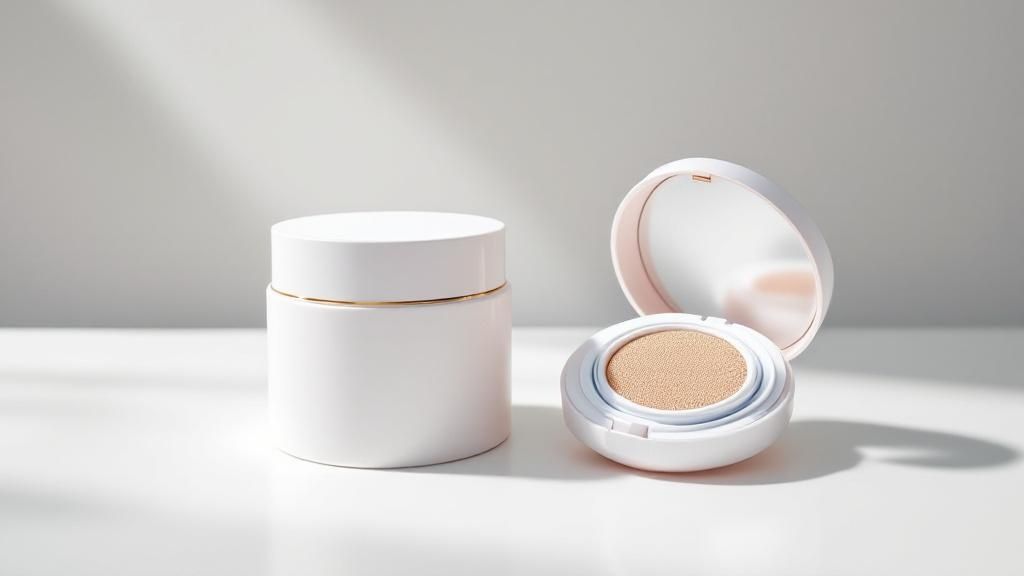
Evaluating Your Personal Skincare Profile
The first step is an honest evaluation of your specific situation. Your skin’s needs are not fixed; they shift with your environment, stress levels, and age. Take these core factors into account:
- Skin Sensitivity and Reactivity: Does your skin often react to new products with redness, breakouts, or itchiness? If so, the Japanese focus on gentle, barrier-fortifying ingredients offers a safer starting point. The Korean approach, with its fast-paced innovation and wide range of active ingredients, can sometimes introduce more variables and potential irritants.
- Time and Consistency Commitment: Be realistic about your daily schedule. Do you have 10 minutes for a focused, efficient ritual, or do you truly enjoy the 30-40 minutes of self-care that a layered Korean routine can offer? The best routine is the one you can follow consistently. A simple Japanese routine performed daily will always deliver better results than a complex Korean routine done only now and then.
- Primary Skincare Goals: Are you aiming for long-term prevention and maintaining a resilient skin barrier, or are you trying to actively fix specific issues like acne, uneven texture, or dullness? J-Beauty is exceptional at prevention, building strong skin over time. K-Beauty provides a powerful, targeted toolkit for more immediate and noticeable results.
Budget and Accessibility: The Economic Factor
Your budget is a major factor in determining which approach is more sustainable for you. This is shaped by the market dynamics of each country. The South Korean skincare market, valued at around USD 10 billion in 2024, is built on fast-moving, widely available innovation. In contrast, Japan's larger beauty market, projected to be worth USD 32.97 billion in 2025, tends toward a premium, heritage-focused model.
This means K-Beauty often presents more budget-friendly products for experimentation, while J-Beauty may involve a higher initial investment in products designed for lasting use. You can dive deeper into the segmentation of South Korea's skincare revenue on Statista.com.
To help you decide, this guide matches different personal profiles with the most suitable skincare philosophy.
Personalized Approach Selection Guide
Strategic matching system for different skin profiles and lifestyle factors
| Your Profile | Japanese Approach Advantages | Korean Approach Advantages | Starting Strategy | Success Indicators |
|---|---|---|---|---|
| The Time-Pressed Professional with Sensitive Skin | Gentle, high-potency formulas reduce irritation. The shorter routine is easy to maintain with a packed schedule. | Provides soothing "cica" products that can be added as needed for flare-ups. | Start with a core Japanese double cleanse, lotion, and moisturizer. | Reduced redness and irritation; skin feels consistently calm and hydrated. |
| The Skincare Enthusiast with Multiple Concerns | Gives a stable, hydrating base to build on. High-quality sunscreens offer superior protection. | Unmatched customization for targeting acne, pores, and brightening all at once. | Use a Korean multi-serum approach for targeted treatments, bookended by a Japanese cleanser and moisturizer. | Clear improvement in specific concerns (e.g., fewer breakouts, brighter tone) without harming the skin barrier. |
| The Budget-Conscious Beginner | Investing in a few high-quality staples can be more cost-effective in the long run. | A massive selection of affordable products allows for low-risk experimentation. | Begin with a simple K-Beauty routine (cleanse, tone, moisturize) to learn your skin's preferences. | Skin feels balanced, and you become more confident in identifying which ingredients work for you. |
| The Mature Skin Type Focused on Prevention | A focus on deep hydration and barrier health helps fight age-related dryness and fine lines. | Potent actives like peptides and fermented ingredients can address signs of aging. | Adopt a foundational Japanese routine and add a targeted Korean anti-aging serum or ampoule. | Skin appears plumper, more radiant, and feels resilient and supple. |
This table shows that you are not confined to a single path. The most effective strategy is often a hybrid one. You might discover that a gentle Japanese cleanser paired with a powerful Korean vitamin C serum gives you the best of both worlds. For those interested in J-Beauty, you might want to look at our guide on the top 10 best Japanese skincare brands to find trustworthy starting points. Listen to your skin, consider your lifestyle, and don't hesitate to adapt.
Implementation Roadmap: Building Your Sustainable Routine
Turning knowledge into action is the most important part of the Japanese vs Korean skincare debate. Choosing a philosophy is one thing, but successfully integrating a new routine for real results is another. A lasting plan requires a gradual, careful transition that gives your skin time to adjust and fits your lifestyle.
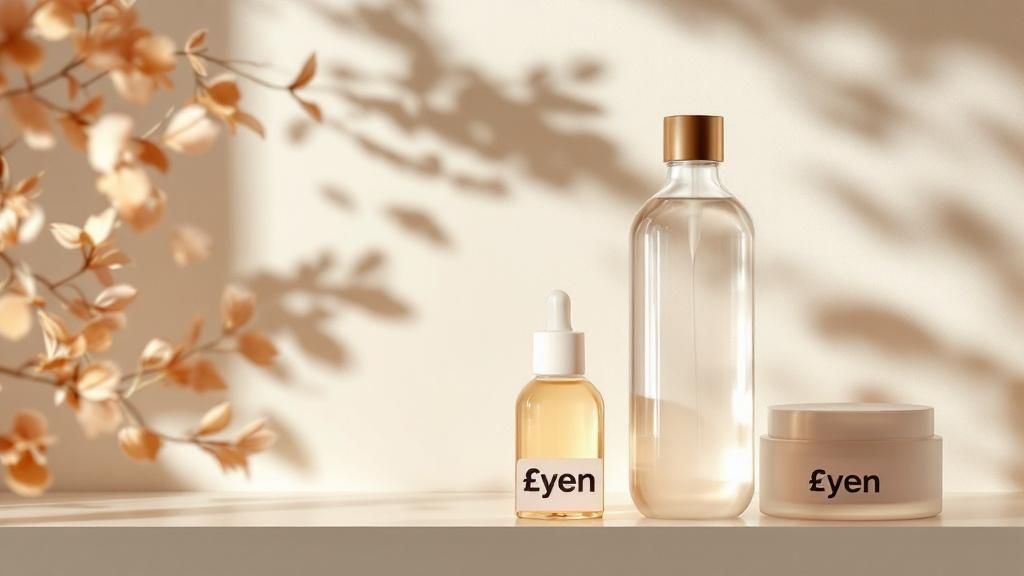
The Transition Protocol: Introducing Products Safely
Rushing to swap out your entire product lineup is a recipe for irritation and confusion. A slow, methodical introduction is essential, whether you choose a Japanese or Korean approach. This strategy helps you pinpoint any product that causes a negative reaction.
- The Rule of One: Introduce only one new product at a time. Use it for at least one to two weeks before adding anything else. This gives your skin a chance to acclimate and lets you accurately identify the source of any problems.
- Prioritize the Foundation: Begin by switching out your core products first. Start with a new cleanser for a week. If that goes well, introduce your chosen hydrator, like a Japanese lotion or a Korean essence. Follow this with a moisturizer, and add treatment serums last.
- Master Patch Testing: Always patch test before applying a new product all over your face. Put a small amount on a hidden area, such as behind your ear or on your inner arm. Check the spot for 24-48 hours for any signs of redness, itching, or irritation. This simple step can prevent widespread reactions.
Creating a System for Tracking and Adjusting
A good routine is a responsive one. Your skin isn't static; it changes with seasons, stress, and hormonal shifts. By creating a simple tracking system, you can learn to understand its needs and make smart adjustments.
The table below provides a clear method for monitoring your progress and solving issues. When you document your skin's response, you stop guessing and start knowing what truly works.
| Progress Tracking Framework | Japanese Approach Focus | Korean Approach Focus | Troubleshooting Sign |
|---|---|---|---|
| Weekly Check-in | Check on your skin barrier. Does it feel calm, plump, and less reactive? | Track specific issues. Is there a visible change in acne or dark spots? | New, persistent redness or tightness. |
| Product Log | Note how your lotion and moisturizer work together. Is hydration effectively sealed in? | Check how products layer. Do they absorb well without pilling or feeling heavy? | Small bumps (comedones) or new breakouts. |
| Photo Diary | Take monthly photos in the same lighting to see long-term changes in texture and tone. | Take weekly photos to notice faster improvements in brightness or clarity from active ingredients. | An increase in oiliness or dryness. |
This structured feedback is crucial. If you notice constant redness, your skin’s barrier might be compromised, which suggests simplifying to a soothing, Japanese-style routine. On the other hand, if you're not seeing progress on an issue like dark spots, it may be time to add a targeted Korean ampoule.
Building a routine is a personal journey of observation and adaptation. Whether you prefer the steady minimalism of J-Beauty or the active layering of K-Beauty, consistency and careful listening are your keys to success.
Ready to start building your perfect Japanese skincare routine? Explore our curated collection of authentic, high-quality products at Buy Me Japan and begin your journey to radiant, healthy skin.

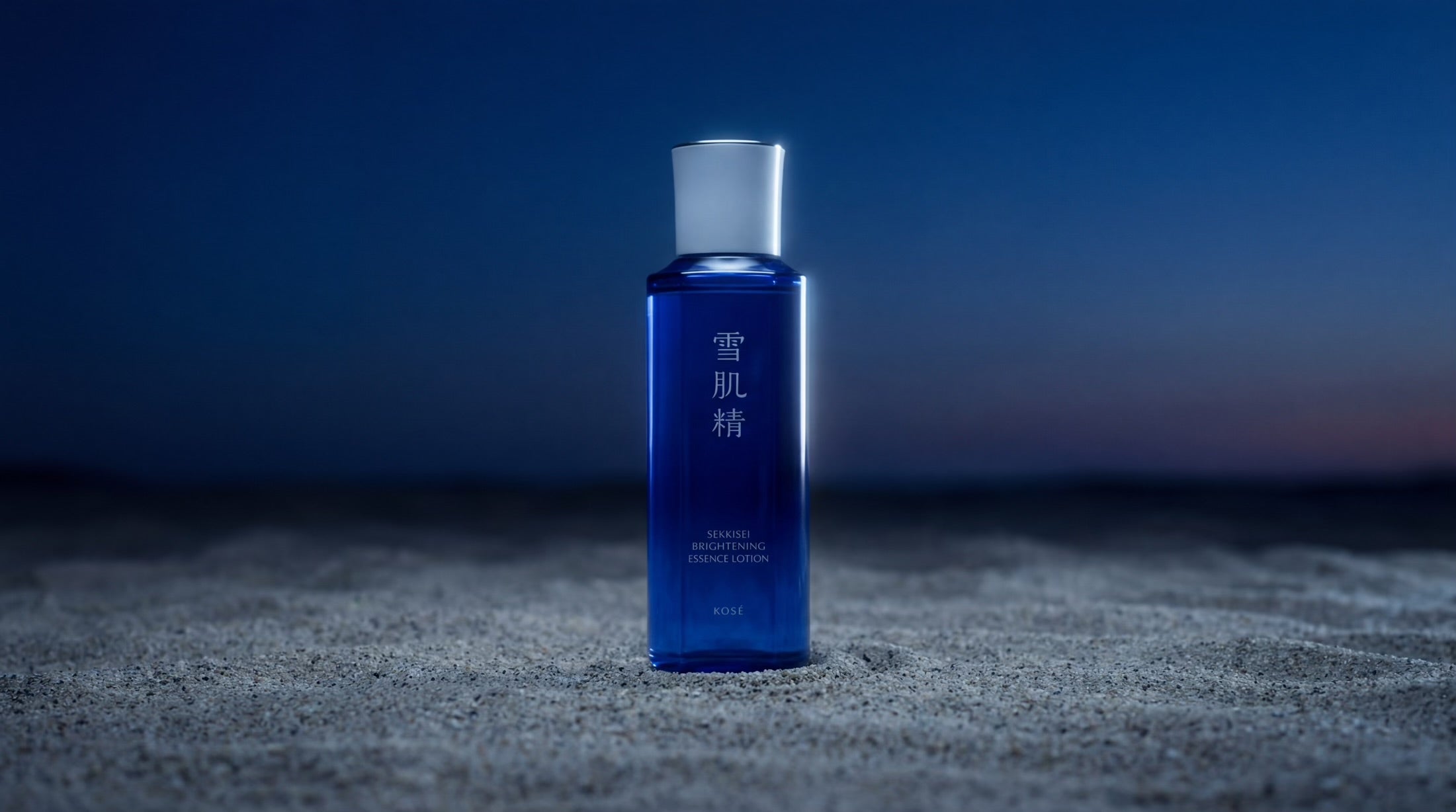
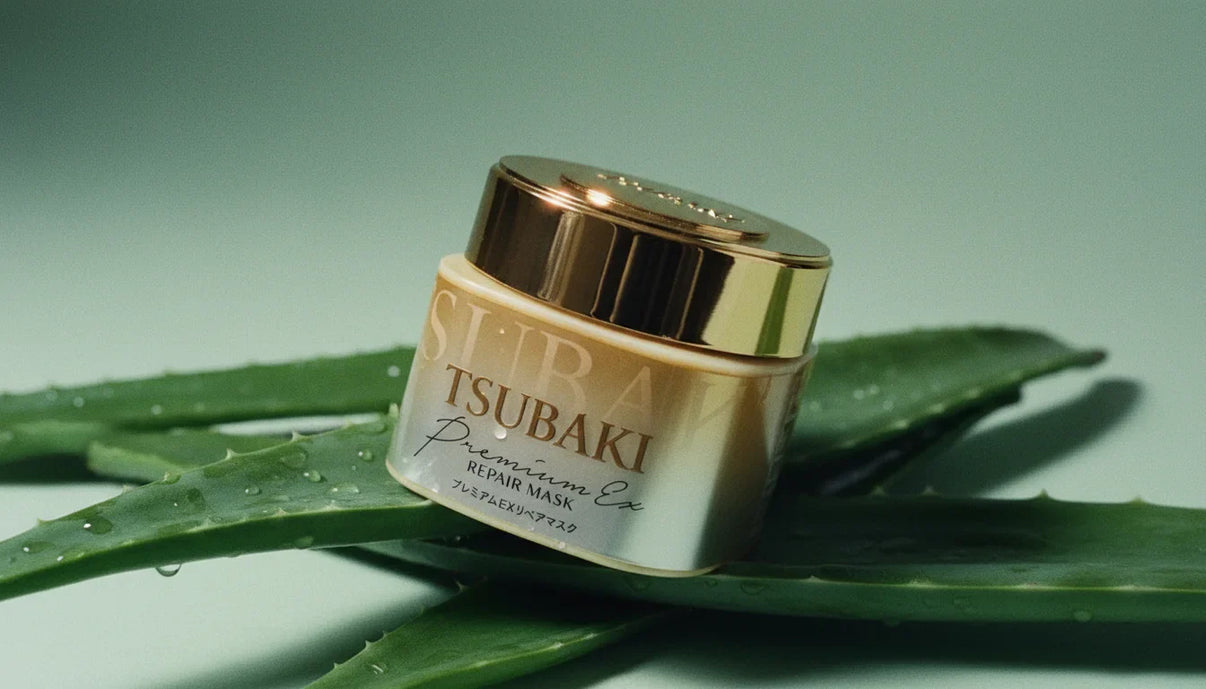

Share:
Top 6 Rice Bran Benefits for Skin You Can't Miss
6 Ways to Use Matcha for Skin Glow in 2025